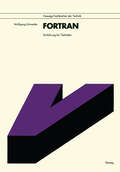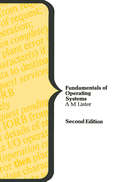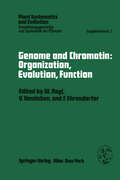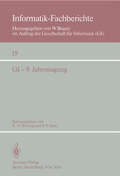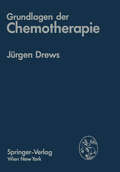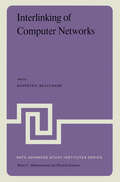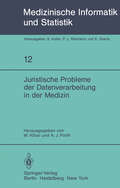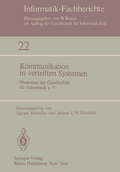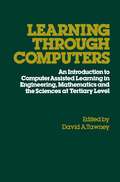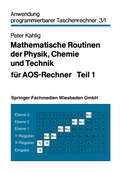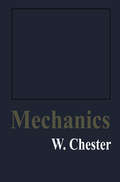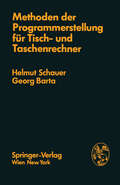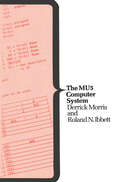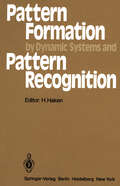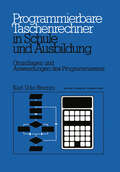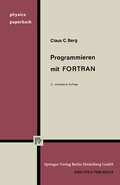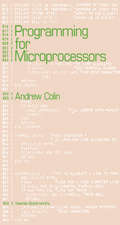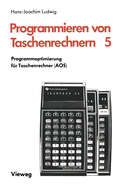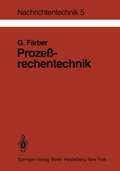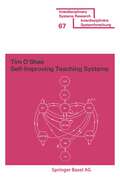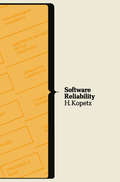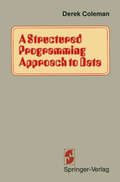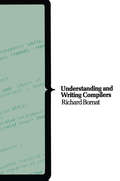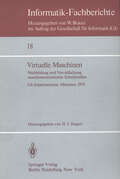- Table View
- List View
Fortran: Einführung für Techniker
by Wolfgang SchneiderDie Programmiersprache FORTRAN ist eine mathematisch-naturwissenschaftlich orientierte Programmiersprache. Sie ist vor allem auf die Bedürfnisse von Wissenschaftlern, Ingenieuren und Technikern zugeschnitten. Es ist nicht erforderlich, über elementare Grundkenntnisse in dieser Programmiersprache hinauszugehen, wenn nur gelegentlich Probleme selbstständig zu programmieren sind und es nicht darauf ankommt, wie elegant das Problem programmtechnisch gelöst wird, sondern nur, daß es gelöst wird. Dieses Buch isoliert deshalb bewußt den Teil der Programmiersprache FORTRAN, der unbedingt zur Erstellung von Programmen erforderlich ist. Besonderer Wert wurde auf einprägsame Merksätze, Übungen, Zusammenfassungen und vollkommen durch programmierte Beispiele gelegt. Das Buch wurde vorwiegend für Studierende an Fachschulen Technik und Fachhoch schulen geschrieben. Dr. Wolfgang Schneider In haltsverzeich n i s 1. Grundlagen der Datenverarbeitung 1 .1. Der Begriff der Datenverarbeitung 1.2. Die Arbeitsweise einer Datenverarbeitungsanlage (OVA) Programmiersprachen 3 2. 2.1. Allgemeines 3 2.2. Maschinensprachen 3 2.3. Assemblersprachen 3 2.4. Problemorientierte Programmiersprachen 4 3. Problemaufbereitung und Aufstellung von Programmablaufplänen 5 3.1. Problemaufbereitung 5 3.2. Programmablaufpläne 5 3.3. Vorteile bei der Anwendung von Programmablaufplänen 7 4. Schreiben des Primärprogramms 7 4.1. Die Lochkarte 8 4.2. Das FORTRAN-Programmformular 9 4.2.1. Kom men taran künd igungen 11 4.2.2. Anweisungsnummern 11 4.2.3. Fortsetzungskarten 12 4.2.4. Anweisungen 12 Kartenkennzeichnung 4.2.5. 13 Besonderheiten bei Eintragungen in FORTRAN-Programmformulare 13 4.2.6.
Genome and Chromatin: Symposium, Kaiserslautern, October 13–15, 1978 (Plant Systematics and Evolution - Supplementa #2)
by W. Nagl V. Hemleben F. EhrendorferAt a round table discussion on the eukaryotic chromosome sponsor ed by the Deutsche Forschungsgemeinschaft in Diisseldorf, February 1978, the botanists among the participants felt that plant systems were under-represented. In this unsatisfactory situation, Professor V. HEMLEBEN, Tiibingen, suggested another meeting to discuss actual problems and results concerning botanical chromosome research. Professor W. NAGL was willing to organize a symposium at the University of Kaiserslautern, and Professor F. EHRENDoRFER, Wien, contacted the Rpringer-Verlag, Vienna-New York, to explore the possibility of publishing the results of this symposium in the form of a supplement volume to the journal Plant Systematics and Evol7ttion. The conference took place on 13-15 October 1978 in the Department of Biology of the University of Kaiserslautern and was attended by 40 participants from 11 universities between Hamburg and Vienna. Emphasis of this Chromosome Symposium was given to three aspects, which do not attract major interest at large international congresses: 1. Discussion and Demonstration of technical details which cannot be found in published papers (so-called tricks). 2. Orientation about actual trends and results in our understanding of the organization, evolution, and function of the plant genome at the level of the DNA (gene), the level of chromatin, and the level of the karyotype. 3. Presentation of hypotheses and models which may be stimulating for further research. Moreover, younger students should have the possibility to present their results and to discuss them with more experienced scientists.
GI — 9. Jahrestagung: Bonn, 1.–5. Oktober 1979 (Informatik-Fachberichte #19)
by K. H. Böhling P. P. SpiesInterlinking of Computer Networks: Proceedings of the NATO Advanced Study Institute held at Bonas, France, August 28 – September 8, 1978 (Nato Science Series C: #42)
by K. G. BeauchampThis volume contains the papers presented at the NATO Advanced Study Institute on the Interlinking of Computer Networks held between August 28th and September 8th 1978 at Bonas, France. The development of computer networks has proceeded over the last few decades to the point where a number of scientific and commercial networks are firmly established - albeit using different philosophies of design and operation. Many of these networks are serving similar communities having the same basic computer needs and those communities where the computer resources are complementary. Consequently there is now a considerable interest in the possibility of linking computer networks to provide resource sharing over quite wide geographical distances. The purpose of the Institute organisers was to consider the problems that arise when this form of interlinking is attempted. The problems fall into three categories, namely technical problems, compatibility and management. Only within the last few years have the technical problems been understood sufficiently well to enable interlinking to take place. Consequently considerable value was given during the meeting to discussing the compatibility and management problems that require solution before x FOREWORD global interlinking becomes an accepted and cost effective operation. Existing computer networks were examined in depth and case-histories of their operations were presented by delegates drawn from the international community. The scope and detail of the papers presented should provide a valuable contribution to this emerging field and be useful to Communications Specialists and Managers as well as those concerned with Computer Operations and Development.
Juristische Probleme der Datenverarbeitung in der Medizin: GMDS/GRVI Datenschutz-Workshop 1979 (Medizinische Informatik, Biometrie und Epidemiologie #12)
by W. Kilian A. J. PorthKommunikation in verteilten Systemen: Workshop der Gesellschaft für Informatik e.V., 3.–4. Dezember 1979, Berlin (Informatik-Fachberichte #22)
by S. Schindler J. C. W. SchröderLearning Through Computers: An Introduction to Computer Assisted Learning in Engineering, Mathematics and the Sciences at Tertiary Level
by D. TawneyMathematische Routinen der Physik, Chemie und Technik für AOS-Rechner (Anwendung programmierbarer Taschenrechner)
by Peter KahligMechanics
by W. ChesterWhen I began to write this book, I originally had in mind the needs of university students in their first year. May aim was to keep the mathematics simple. No advanced techniques are used and there are no complicated applications. The emphasis is on an understanding of the basic ideas and problems which require expertise but do not contribute to this understanding are not discussed. How ever, the presentation is more sophisticated than might be considered appropri ate for someone with no previous knowledge of the subject so that, although it is developed from the beginning, some previous acquaintance with the elements of the subject would be an advantage. In addition, some familiarity with element ary calculus is assumed but not with the elementary theory of differential equations, although knowledge of the latter would again be an advantage. It is my opinion that mechanics is best introduced through the motion of a particle, with rigid body problems left until the subject is more fully developed. However, some experienced mathematicians consider that no introduction is complete without a discussion of rigid body mechanics. Conventional accounts of the subject invariably include such a discussion, but with the problems restricted to two-dimensional ones in the books which claim to be elementary. The mechanics of rigid bodies is therefore included but there is no separate discussion of the theory in two dimensions.
Methoden der Programmerstellung für Tisch- und Taschenrechner: Grundlagen, Anwendungen, Grenzen
by H. Schauer G. BartaPattern Formation by Dynamic Systems and Pattern Recognition: Proceedings of the International Symposium on Synergetics at Schloß Elmau, Bavaria, April 30 – May 5, 1979 (Springer Series in Synergetics #5)
by Hermann HakenThis book contains the manuscripts of the papers delivered at the International Sym posium on Synergetics held at SchloB Elmau, Bavaria, Germany, from April 30 until May 5, 1979. This conference followed several previous ones (Elmau 1972, Sicily 1974, Elmau 1977). This time the subject of the symposium was "pattern formation by dynam ic systems and pattern recognition". The meeting brought together scientists from such diverse fields as mathematics, physics, chemistry, biology, history as well as experts in the fields of pattern recognition and associative memory. When I started this type of conference in 1972 it appeared to be a daring enter prise. Indeed, we began to explore virgin land of science: the systematic study of cooperative effects in physical systems far from equi~ibrium and in other disciplines. Though these meetings were attended by scientists from quite different disciplines, a basic concept and even a common language were found from the very beginning. The idea that there exist profound analogies in the behaviour of large classes of complex systems, though the systems themselves may be quite different, proved to be most fruitful. I was delighted to see that over the past one or two years quite similar conferences were now held in various places allover the world. The inclusion of prob lems of pattern recognition at the present meeting is a novel feature, however.
Programmierbare Taschenrechner in Schule und Ausbildung: Grundlagen und Anwendungen des Programmierens
by Karl Udo BrommProgrammieren mit FORTRAN (Schriften des Instituts für Gesellschafts- und Wirtschaftswissenschaften der Universität Bonn)
by C. C. BergProgramming for Microprocessors
by Andrew ColinProgramming for Microprocessors deals with the basics of programming for microprocessors and contains practical aids to programming. Topics covered range from assembly language and microprocessor design to the Motorola 6800, programming techniques, control of peripheral devices, and high-level languages. Emphasis is given to the computer-like aspects of microprocessors. This text is comprised of 12 chapters; the first of which provides a general overview of microprocessors, differences between hardwired and programmed devices, and different kinds of microprocessors. The reader is then introduced to the basic types of information inside a microprocessor, including Boolean information, numerical information, character codes, and the machine code. The chapters that follow focus on the intellectual and practical tools that the designer of a microprocessor system will need. The basic structure of a microprocessor is analyzed, with particular reference to a simple hypothetical computer and some programs for this machine. This book also discusses assembly language; some of the features that give microprocessors their flexibility as well as generality and power; and the Motorola 6800 microprocessor as an example of machine architecture. Some programming techniques, high-level languages for writing programs, and the problem of bringing the hardware and software together are highlighted. This book will be useful to computer programmers, computer scientists, and electronic engineers.
Programmoptimierung für Taschenrechner (Programmieren von Taschenrechnern #5)
by Ludwig Hans-JoachimDer programmierbare Taschenrechner hat inzwischen eine weite Verbreitung gefunden. Nicht nur in die Technik, sondern auch in Forschung und Lehre hat er seinen Einzug gehalten. Dabei erschließen ihm seine vielfältigen Einsatzmöglichkeiten, die hochent wickelte Technologie und der immer günstiger werdende Preis weiterhin ständig neue Anwendungsbereiche und Abnehmerkreise. Der Umgang mit ihm ist denkbar einfach, wie auch der Anfänger sofort erkennen wird. Die inzwischen erschienene einführende Literatur tut ein übriges dazu, schnell mit ihm vertraut zu werden. Doch gehören Erfahrung und Detailkenntnisse dazu, optimale Lösungen zu finden. Das geschickte Ausnutzen des Taschenrechners bis an die Grenzen seiner Möglichkeiten vermag die Leistungsfähigkeit eines Programms erstaunlich zu er höhen. Trainierte Rechnerbenutler können arbeitsfähige Programme nicht nur in sehr kurzer Zeit erstellen, sondern auch für Probleme entwickeln, die mit programmierbaren Taschenrechnern zu lösen man nicht für möglich gehalten hätte. Zweck des Buches ist es, in diesem Sinne gezielte Anleitung zu optimaler Programmierung zu geben. Wir setzen dafür erste Kenntnisse des Lesers in dem Umgang mit seinem Taschenrechner voraus. Die einzelnen Tasten sollten ihm bekannt sein, auch sollte er wissen, wie man ein Programm in den Rechner eingibt und ablaufen läßt. Wir erwarten aber nicht, daß er sich bereits gründlich mit ihm befaßt hat. Die erforderlichen mathematischen Kennt· nisse haben wir mit Absicht so gering gehalten, daß das Buch gleichermaßen von I nge· nieuren, Lehrern und Studenten aller Fachrichtungen nutzbringend gelesen werden kann.
Prozeßrechentechnik: Allgemeines, Hardware und Software, Planungshinweise (Nachrichtentechnik #5)
by G. FärberRecycling (Gabler-Studientexte)
by Robert Günter PanzDas Thema soll in einen Grenzbereich der Materialwirtschaft führen, der durch die tagespolitischen Ereignisse immer größere Bedeutung für die Unternehmung gewinnt. Naturgemäß ist in einer marktorientierten Gesellschaft das verkaufs fähige Produkt da~ Objekt aller Anstrengungen und Leistungen. Produktion und Verkauf stehen im Blickpunkt, andere Bereiche werden als notwendig be trachtet, während das Gebiet der Entsorgung innerhalb der Unternehmung zu nächst ohne besondere Beachtung bleibt. Mit zunehmender technologischer Perfektion, finanzwirtschaftlicher Beherrschung des Produktabsatzes rückt die Güterbereitstellung zur Deckung des Bedarfs plötzlich in den Hintergrund - Schlagworte wie Konsumterror, Abfallgesell schaft u. ä. kennzeichnen den Wandel - und die Frage nach der Qualität der Produktion, nicht mehr des Produkts, gewinnt eine neue Dimension. Damit wird für die Unternehmung die Alternative aufgezeigt, daß es nicht so sehr auf die Qualität des Produktes ankommt, weil die Grundbedürfnisse befriedigt sind, sondern auf die Qualität der Produktion, damit die Beeinträchtigung kleiner bleibe als der Nutzen der Bedarfsbefriedigung. Diese Überlegungen zwingen die Unternehmung, einen Sektor ihrer Existenz sowohl in die Kosten- als auch in die Erlösbetrachtung einzubeziehen, nämlich den Umweltschutz mit seinen Be reichen Luft- und Wasserbelastung, Abfallbeseitigung sowie Rückgewinnung von Kreislaufstoffen aus der Luft, dem Wasser und den Abfällen. Eine Materialverwertung ohne Reststoffe mit einem Produktionsverfahren ohne Umweltbeeinträchtigung wird in der Zukunft keine Standortprobleme, keine negative Publizität kennen und im Markt dadurch begünstigt sein.
Self-Improving Teaching Systems: An Application of Artificial Intelligence to Computer Assisted Instruction (Interdisciplinary Systems Research)
by O'SHEAA Structured Programming Approach to Data
by COLEMANMuch of current programming practice is basically empirical and ad hoc in approach. Each problem is tackled without relation to those that have gone before; experiences are made and stored as a series of fragments. Now, under the pressure of events, this unsatisfactory state of affairs is coming to an end. Programming is becoming a technology, a theory known as structured programming is developing. The purpose of a theory is to categorise and explain existing practice, thus enabling it to be improved through the development of new and sharper techniques. The resulting experiences have then to be fed back into the theory so that the process of enrichment may continue. This dialectical relationship between theory and practice is essential to a healthy programming technology. The lack of such a relationship in the 1950s and 60s and the accompanying software crisis certainly confirm the converse of this proposition. My aim in writing this book has been to explain the current state of the theory of structured programming, so that it may be used to improve the reader's practice. The book deals with two facets of programming - how to design a program in terms of abstract data structures and how to represent the data structures on real and bounded computers. The separation between program design and data structure representation leads to more reliable and flexible programs.
